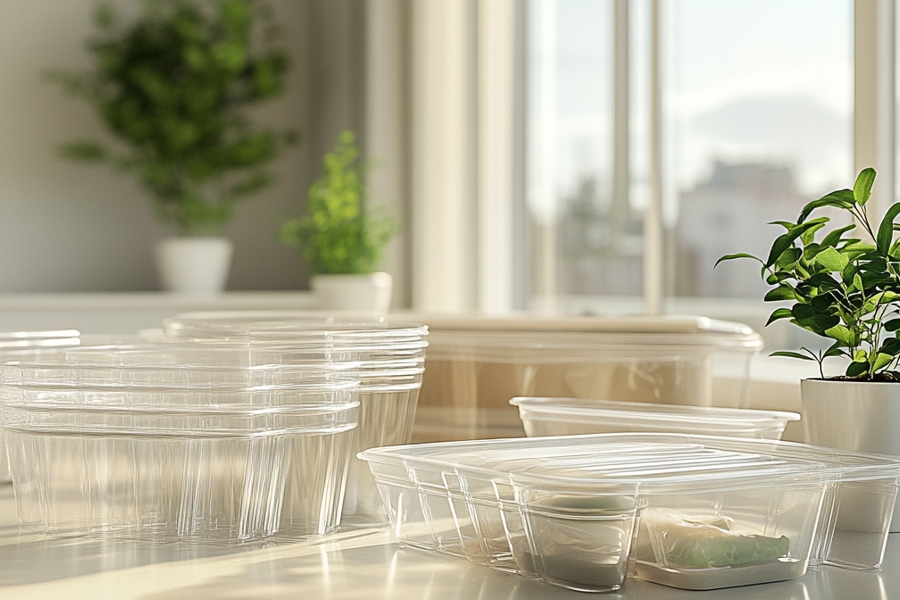Understanding Polylactic Acid (PLA) in Sustainable Packaging

Polylactic Acid (PLA) is a type of bioplastic derived from renewable resources, such as corn starch or sugarcane, making it a leading material in the push for sustainable packaging solutions. As consumers and industries increasingly turn away from petroleum-based plastics due to environmental concerns, PLA offers an eco-friendly alternative that is both compostable and biodegradable under the right conditions. This material is becoming a key player in the future of packaging, providing a balance between functionality and environmental responsibility.
What is Polylactic Acid (PLA)?
Polylactic Acid, commonly known as PLA, is a thermoplastic aliphatic polyester that is produced from the fermentation of starches found in plants such as corn or sugarcane. PLA is widely recognised for its ability to biodegrade in industrial composting environments, where heat and moisture facilitate its decomposition into natural elements like carbon dioxide, water, and biomass. It is one of the most popular bioplastics currently used in packaging due to its versatility and eco-friendly properties.
Unlike conventional plastics, which are derived from fossil fuels and can take hundreds of years to break down, PLA is derived from renewable resources, and under specific conditions, it can decompose within a few months. This makes PLA a promising option for reducing plastic waste and supporting a circular economy.
Applications of PLA in Packaging
PLA has found widespread application across various sectors due to its biodegradability and flexibility. Its use in packaging includes:
-
Food Packaging: PLA is commonly used to produce biodegradable food containers, cups, trays, and wrappers. It is ideal for single-use packaging in the food and beverage industry, offering a sustainable solution for items that are typically discarded after use.
-
Bottles and Cups: PLA can be used to create compostable plastic bottles and cups, making it a popular choice for eco-friendly water bottles and takeaway coffee cups.
-
Films and Bags: PLA is also used in the production of biodegradable films and bags, which can serve as alternatives to plastic wrap and plastic shopping bags. These films are often used for food packaging, as they provide a barrier to moisture and oxygen, helping to preserve the product.
-
Medical Packaging: In the healthcare industry, PLA is used in packaging for medical devices and products due to its ability to break down in composting conditions, making it a preferred choice for disposable items.
Advantages of Polylactic Acid (PLA)
The primary advantage of PLA is its environmental sustainability. Since it is made from renewable plant resources, it has a much lower carbon footprint compared to petroleum-based plastics. This helps reduce reliance on fossil fuels, contributing to a more sustainable production process.
Another key benefit is PLA’s biodegradability and compostability. In an industrial composting environment, PLA breaks down into non-toxic elements within months, greatly reducing the amount of plastic waste that ends up in landfills or the ocean. This makes it an ideal material for single-use products, such as packaging, where disposal is a major environmental concern.
PLA also offers versatility and functionality similar to traditional plastics. It can be easily moulded into different shapes and forms, making it suitable for a wide range of packaging applications, from containers to films. Additionally, it is transparent and can be used for food-safe packaging, which makes it a practical choice for various industries.
Challenges of Polylactic Acid (PLA)
Despite its advantages, PLA comes with a set of challenges that limit its widespread adoption. One major limitation is that PLA requires specific industrial composting conditions to break down effectively. These conditions - such as high heat and controlled humidity - are not present in home compost bins or natural environments. As a result, PLA that ends up in landfill may still take years to decompose, especially if it lacks access to these optimal conditions.
Another challenge is the cost. Although the production of PLA is becoming more efficient, it is still generally more expensive to produce than conventional plastics, which can be a barrier for widespread use, especially in industries driven by cost-efficiency.
Additionally, PLA can have limited heat resistance, which may cause it to deform at temperatures above 50°C. This limits its use in certain applications, such as hot beverage cups or microwavable containers, where higher heat stability is required.
Future Trends in PLA and Sustainable Packaging
As the demand for sustainable packaging solutions continues to grow, the use of PLA is likely to expand. Research is currently focused on improving the properties of PLA, such as enhancing its heat resistance and making it more adaptable to a broader range of packaging applications. Furthermore, innovations in blending PLA with other bioplastics or biodegradable materials are being explored to improve its performance while maintaining its compostability.
Another key trend is the development of home-compostable PLA, which would allow consumers to compost PLA packaging in their home compost bins, further reducing its environmental footprint and making it a more viable alternative to traditional plastics.
Summary
Polylactic Acid (PLA) is an important step forward in the development of sustainable packaging materials. As a renewable, biodegradable alternative to traditional plastics, PLA provides an eco-friendly option for a variety of packaging needs. While challenges remain, ongoing advancements in material science are likely to increase the viability and affordability of PLA, positioning it as a key player in the future of sustainable packaging.
Jacob White Packaging is committed to supporting the transition to sustainable packaging solutions. Our expertise and dedication to innovation ensure that your packaging meets both environmental standards and functional requirements. If you are exploring sustainable packaging options for your business, contact Jacob White Packaging today to discuss how we can assist you in adopting environmentally responsible solutions tailored to your needs.

